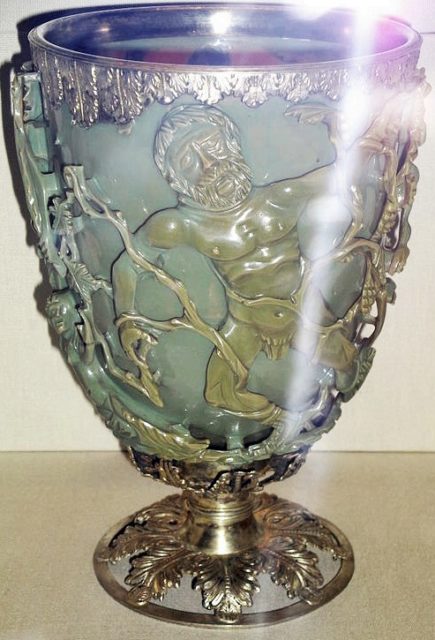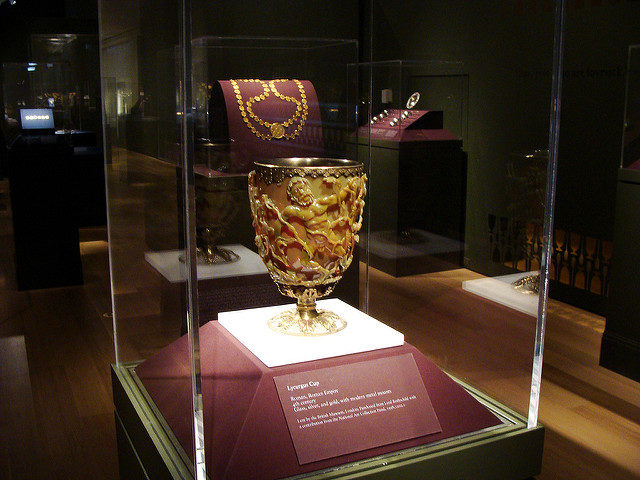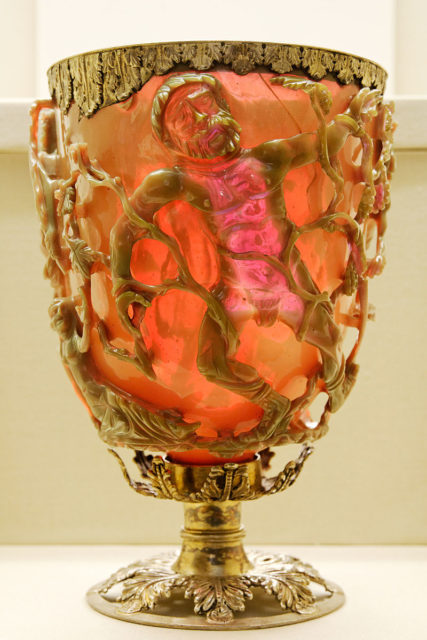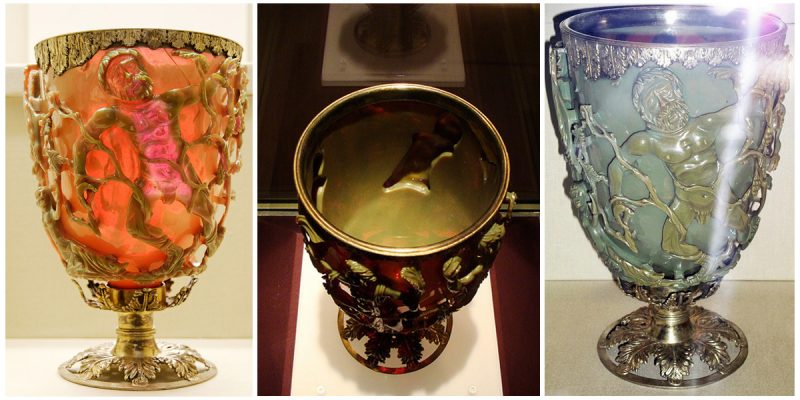One of the most impressive glass-made objects on display at the British Museum is the luxurious Roman cage cup known as the Lycurgus Cup. This fascinating item, made of diachronic glass, was probably crafted in Rome in the 4th century AD.
It is called the Lycurgus Cup because of the scene that is engraved on the outer surface: a depiction of the triumph of Dionysus over King Lycurgus, the ruler of the Edoni people in Thrace. This Roman cage cup is also known as diatretum, and it consists of a bowl made of glass that has a shell or cage decoration around it.
The vessel manufactured from a diachronic glass is a fascinating piece because it changes its colors in certain lighting conditions. The Lycurgus Cup has a red color when it’s lit from behind, and green when it’s lit from the front. Besides making vessels out of it, this type of glass was also used for jewelry and stained glass.

Short stems attach the shell decorations to the cage cup, and most of the designs were of geometrical patterns. The chalices carved in this technique also had significant inscriptions engraved between the patterns. Today, about 50 cups have survived, but with some of them only fragments remain, and there are only few in near-complete condition.

They were probably designed for feast drinking where they were passed around from man to man on important celebrations. It is believed that these unique cups were also used as oil lamps, when the color-changing effect could be seen more clearly and frequently. They were complicated to make and because the craftsmen could not control the coloring process of the glass, this technique didn’t develop beyond the 4th century AD.

It is believed that the process was discovered accidentally when silver dust was mixed with minutely ground gold. Maybe the makers did not know that gold was involved in the process, because sometimes traces of gold were left by accident in their workshops while they were making other objects.

Besides the geometrical shapes, some of the cage cups were engraved with whole compositions like the scene on the Lycurgus Cup. In the scene the mythical King Lycurgus attacked Dionysius, and he tried to kill one of his female followers, Ambrosia.

Then she called out to Mother Earth who transformed her into a vine. Ambrosia twined around the king and held him captive. The symbolic meaning of the changing colors of the cup is connected with the red wine that represents the god Dionysius and the green vine that represents the good nature imprisoning the evil king. The cup is the only well-preserved example with figure composition.

According to some historians, the scene of the myth was probably carved on the bowl because of a political event at that time, such as the defeat of the Roman Emperor Licinius by Constantine I at the Battle of Chrysopolis in 324 AD. Because of the date of the event, it is believed that the Lycurgus Cup was probably made in Alexandria. However, the history of the cup is not confirmed.
Read another story from us: Chalice: The cup that occupies the first place among sacred vessels
In the 19th century, the cup was bought by Lionel de Rothschild. It was purchased by the British Museum in 1958 from Victor, Lord Rothschild and put on display in the Waddesdon Bequest section, in Room 2a. In this room, a changing internal light was installed that shows the color effect of the cup. Today, the Lycurgus Cup is on permanent display in Room 41 at the museum.
